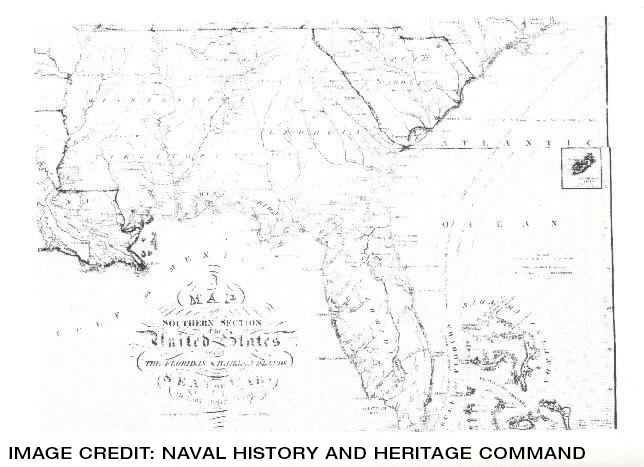
Weather & Landscapes in The War of 1812
Shifting weather patterns and favorable landscapes can determine the outcome of a battle before it even starts. Read more about the weather and landscapes of the War of 1812 and see how military actions were dictated by weather events.
The Great Louisiana Hurricane of 1812
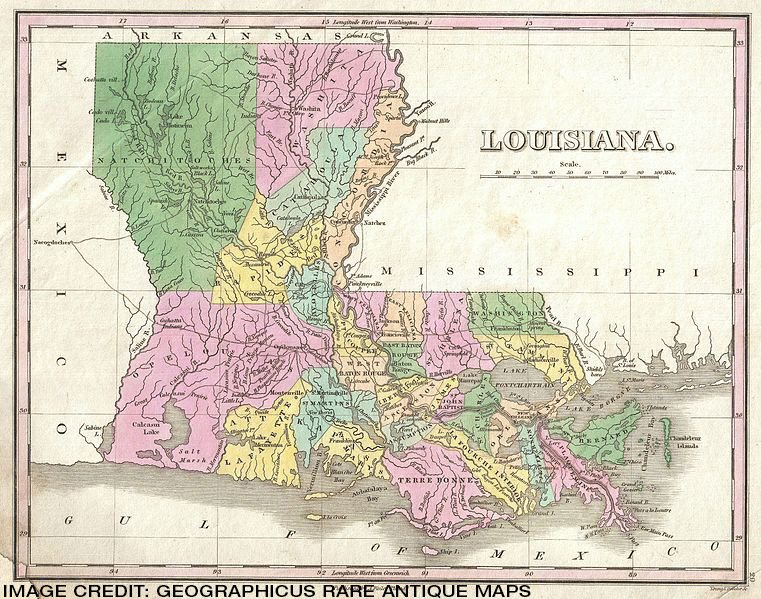 On August 19, 1812, just three weeks after the outbreak of war with Great Britain, a hurricane struck Louisiana and damaged the naval station in New Orleans. Under the control of Captain John Shaw, the fleet was prepared to sail when the hurricane made landfall. 53 ships were damaged in the storm and several more were washed ashore along Lake Pontchartrain. The Navy hospital had half of it’s roof blown off and additional buildings were blown down. Fort St. Phillip in Southeastern Louisiana sustained heavy damage after it flooded and most soldiers in the fort drowned. Flooding of up to 15 feet was reported in New Orleans and over 100 homes were destroyed. This storm highlighted the weakness of the American Naval Fleet and would set back military preparations for many months.
On August 19, 1812, just three weeks after the outbreak of war with Great Britain, a hurricane struck Louisiana and damaged the naval station in New Orleans. Under the control of Captain John Shaw, the fleet was prepared to sail when the hurricane made landfall. 53 ships were damaged in the storm and several more were washed ashore along Lake Pontchartrain. The Navy hospital had half of it’s roof blown off and additional buildings were blown down. Fort St. Phillip in Southeastern Louisiana sustained heavy damage after it flooded and most soldiers in the fort drowned. Flooding of up to 15 feet was reported in New Orleans and over 100 homes were destroyed. This storm highlighted the weakness of the American Naval Fleet and would set back military preparations for many months.
Shifting Winds in The Battle of Lake Erie
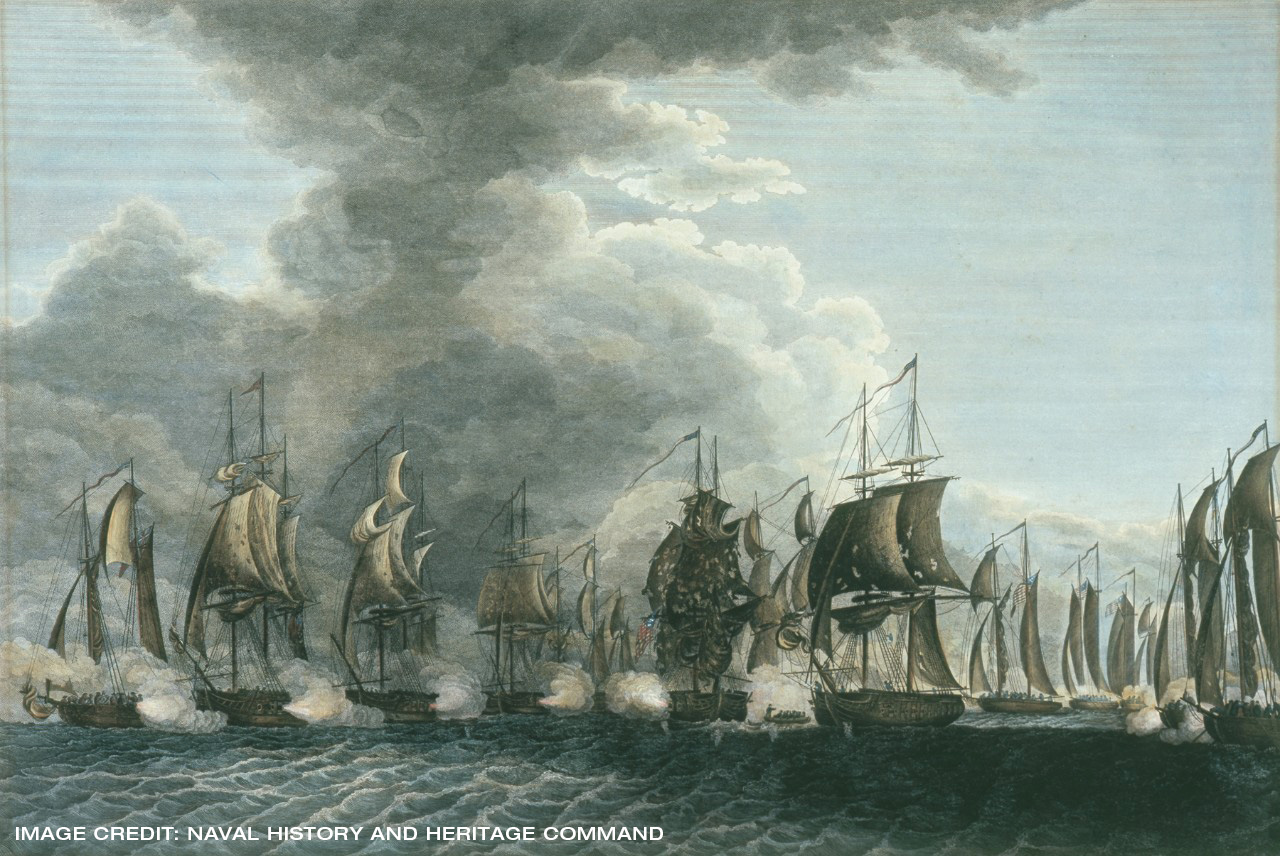 Led by Oliver Hazard Perry, the American naval squadron stationed in Lake Erie spotted British vessels on September 10, 1813. The Americans set sail with their two largest ships, the USS Niagara and the Lawrence, to engage with the British, led by Admiral Robert H. Barclay. Initially, the British had the prevailing winds and were able to sustain considerable damage on the flagship Lawrence. Perry commanded this ship until its final cannon was destroyed, where he took a rowboat
Led by Oliver Hazard Perry, the American naval squadron stationed in Lake Erie spotted British vessels on September 10, 1813. The Americans set sail with their two largest ships, the USS Niagara and the Lawrence, to engage with the British, led by Admiral Robert H. Barclay. Initially, the British had the prevailing winds and were able to sustain considerable damage on the flagship Lawrence. Perry commanded this ship until its final cannon was destroyed, where he took a rowboat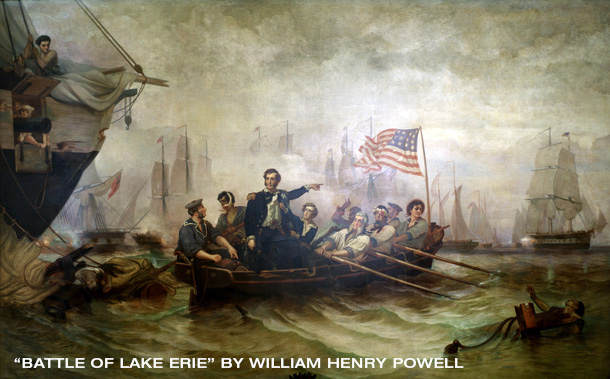 to the USS Niagara and continued the fight from there. After Perry had taken control of the USS Niagara, the winds shifted to the American’s favor. They were able to punch through the British lines and inflict heavy damages on the enemy ships. A wounded Barclay would surrender his two largest ships, the HMS Detroit and the HMS Queen Charlotte, and the British were subsequently forced from Fort Detroit. Lake Erie would remain under American control for the remainder of the war and would prevent a British invasion from Canada in Ohio, Pennsylvania, and Western New York.
to the USS Niagara and continued the fight from there. After Perry had taken control of the USS Niagara, the winds shifted to the American’s favor. They were able to punch through the British lines and inflict heavy damages on the enemy ships. A wounded Barclay would surrender his two largest ships, the HMS Detroit and the HMS Queen Charlotte, and the British were subsequently forced from Fort Detroit. Lake Erie would remain under American control for the remainder of the war and would prevent a British invasion from Canada in Ohio, Pennsylvania, and Western New York.
The Tornado that Saved Washington, D.C.
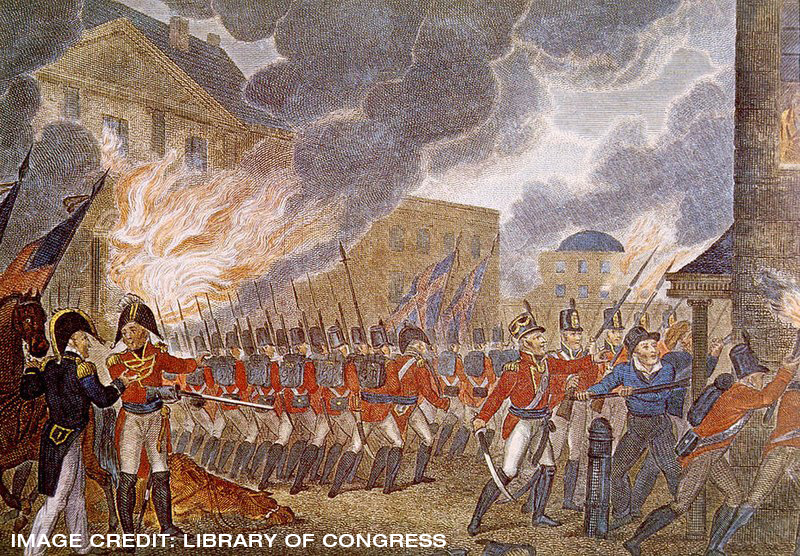 On August 24, 1814, the British arrived in Washington, D.C. and easily conquered the American volunteer forces. Washington was picked as a target due to its symbolic importance, easy access from the sea, and inability to be protected by the Americans. British Troops set fire to the White House, Capitol Building, and other government properties. President Madison and Secretary of State James Monroe narrowly escaped the city and were nearly captured by the British.
On August 24, 1814, the British arrived in Washington, D.C. and easily conquered the American volunteer forces. Washington was picked as a target due to its symbolic importance, easy access from the sea, and inability to be protected by the Americans. British Troops set fire to the White House, Capitol Building, and other government properties. President Madison and Secretary of State James Monroe narrowly escaped the city and were nearly captured by the British.
The following day, on August 25, 1814, a tornado touched down on the city. As the British were preparing to leave, storm clouds appeared on the horizon and a strong thunderstorm followed. British soldier George Robert Gleig wrote in his memoir “Of the prodigious force of the wind it is impossible for you to form any conception. Roofs of houses were torn off by it and whisked into the air like sheets of paper, while the rain which accompanied it resembled the rushing of a mighty cataract rather than the dropping of a shower.” The severe weather lasted for two hours with torrential rainfall dropping on the city. The winds tore the roofs off the General Post Office and Patent Office buildings, trees were uprooted, and cannons were tossed into the air. Others report of houses being picked up and landing on their foundations. The rains dowsed the fires set by the British and they were able to use the confusion from the storm to cover their quick withdrawal that night. More British were killed by flying debris of the tornado than in the battle to overtake the city.